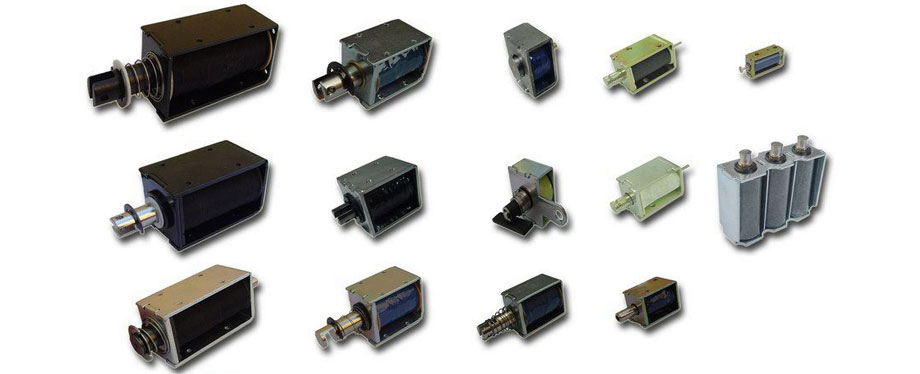Solenoid refers to the coil of wire wrapped around a metallic core, which produces the uniform magnetic field in a volume of space when the electric current passes through it. And the metallic core (usually iron core) is also magnetized by the magnetic field of the electric solenoid, and becomes a magnet. Thus the magnetism of the solenoid is greatly enhanced by the superposition of two electromagnets of magnetic fields. One thing that you should be aware of is that the coil wrapped on the iron core should be winding in the opposite direction: one comes in clockwise and the other counterclockwise. Otherwise, the two coils’ magnetization on the metallic core will offset each other and the metallic core would have no magnetism. Moreover, the metallic core is usually made of soft iron instead of steel. Because once steel is magnetized, it will keep magnetism for a long time without demagnetization. As a result, the magnetic strength of the steel core cannot be controlled by the size of current, thus losing the advantages of solenoid.
The solenoid is often used as a relay in vehicle’s motor for connecting battery directly to the starter motor when started by the ignition switch. In some applications, the coil wire goes around the iron plunger. When magnetized, the iron plunger moves in one direction due to the current. And when the direction of the current flow is opposite, the iron plunger moves in the opposite direction too. And this kind of solenoid is mainly used in the on-off switch valve.
How A Solenoid Works?
A solenoid works like this: when electric current flows through a coil wire, a magnetic field is established around the wire. The iron core and armature are also magnetized and become two magnets with opposite polarity, and thus producing electromagnetic attraction. When the strength of attraction is larger than the spring’s reaction force, the armature moves towards the iron core. However, when the current in the coil is less than a certain value or when the power supply is interrupted, the electromagnetic attraction is smaller than the counter force of the spring, and the armature will return to its original release position under the action of reaction force.
What Does A Solenoid Do?
Solenoid has wide applications in our daily life. Among all the motors and electric appliances that can cause movement, only a few move because of electrostatic attraction or repulsion effect outside. Most of these motors and electric appliances move due to the electromagnetic effect. The biggest advantage of solenoid is that there is elimination and variety between the intensity of its magnetic properties, thus its motion can be controlled accurately by controlling the current even in a faraway place. As for the daily appliance, solenoid can be used in hydraulic valve, vehicle’s motor, electric bell on door, Magnet Crane, cell phone, Magnetically Levitated Train, packaging machine, stamping equipment, explosion-proof valve and water solenoid valve, etc.
Technically speaking, solenoid and electromagnet are not the same thing. However, many people talk as if they are. What is the difference between solenoid and electromagnet?
Here comes the brief comparison. Solenoid and electromagnets are closely related terms. Strictly speaking, a solenoid is an electromagnet but an electromagnet needn’t necessarily be a solenoid. An electromagnet can produce magnetic field with electricity, while a solenoid is a kind of wound coil. In the case of application, the electromagnet is often used to pick up iron materials, while the solenoid is used to actuate the armature or other mechanisms. The iron core in a solenoid is called plunger or actuator. This iron core is also an electromagnet that does not move without coil wire. The solenoid used in our daily life usually has a iron core in it.
